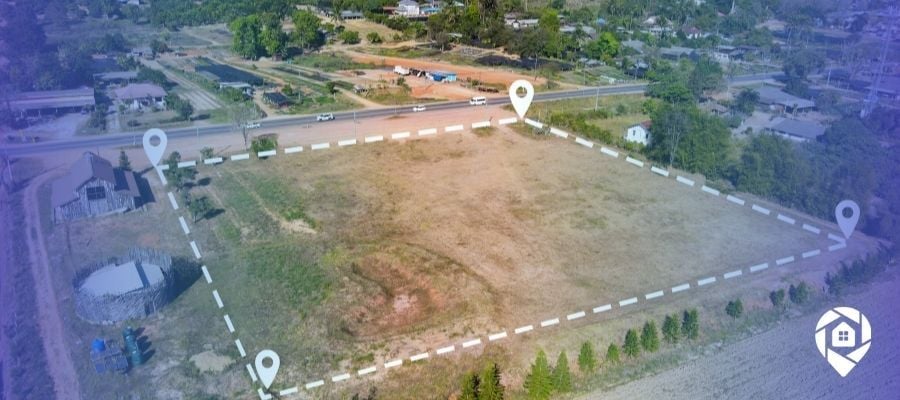
Navigating Non-Disclosure States for Real Estate Investing

Understanding non-disclosure states can be a critical component for real estate investors looking to broaden their investment portfolio. Real estate investing requires a keen eye for value. That makes navigating non-disclosure states with limited available information a challenge. So without further ado, let's dive into non-disclosure states.
What are Non-Disclosure States?
Non-disclosure states are those regions where the estimated sales prices of real estate are not publicly available after the property has changed hands. While it may seem like a mind-boggling concept to many, it’s a reality for numerous real estate investors across America.
Currently, there are a number of non-disclosure states. They include Alaska, Idaho, Kansas, Louisiana, Mississippi, Montana, New Mexico, North Dakota, South Dakota, Texas, Utah, and Wyoming. Before investing, real estate professionals should familiarize themselves with this list of non-disclosure states. Especially if you live or invest in one of those states.
The Legality Around Non-Disclosure States
In non-disclosure states, it's legally permissible for the disclosure and non-disclosure of transaction details to remain private. So, it can be difficult to understand the value of a transferred property and the real estate market. Investors, realtors, and appraisers usually get this data from other sources like tax records, MLS listings, and appraisals.
Pros and Cons of Investing in Non-Disclosure States
Like in any business endeavor, there are both pros and cons to real estate investing in non-disclosure states. On the upside, less readily available information might reduce competition, offering you a competitive advantage if they're able to uncover valuable data.
On the other hand, the lack of information can pose significant risks. The property's actual value might be significantly different from an initial estimate. This can lead to substantial financial losses. So you just need to be more aware when investing in these regions.
How to Navigate Non-Disclosure States as a Real Estate Investor
Navigating non-disclosure states doesn't have to be a hopeless challenge. The key is to leverage other sources of information at your disposal.
First, consider working with a knowledgeable real estate agent from the area. They stay updated on market trends and insights by actively participating in the local property market. They have up-to-date knowledge because of their involvement.
You can also examine tax assessments and property deed records. More often than not, local governmental entities have such data available to the public. But, we'll dive into that in a minute.
Strategies for Effective Market Analysis in Non-Disclosure States
Investing in non-disclosure states requires a creative approach to market analysis. Traditional metrics and sales data are often not publicly accessible. However, by employing a combination of alternative data sources and analytical techniques, investors can gain valuable insights into market trends and property values. Here are some strategies that can help:
1. Utilize Property Tax Assessments and Historical Data: Property tax assessments can offer a baseline for understanding property values over time. Just be aware, that they don't always reflect the current market value accurately. By analyzing the historical growth in tax assessments, investors can identify trends and potential investment opportunities. Additionally, comparing properties with similar tax assessment histories can provide relative value insights.
2. Engage in Comparative Market Analysis (CMA): Even in non-disclosure states, real estate professionals can perform CMAs by examining properties with similar characteristics that are currently listed or have recently sold. This analysis helps in estimating a subject property's value by comparison, leveraging MLS listings that real estate agents have access to.
3. Explore Alternative Data Sources: Beyond traditional real estate data, alternative data sources such as construction permits, demographic changes, and employment rates can offer insights into the economic health and potential growth of a region. For instance, an uptick in construction permits may indicate a growing interest in a particular area. This signals potential real estate value increases.
4. Network for Insider Insights: Building relationships with local real estate agents, brokers, appraisers, and other investors can provide access to unofficial sales data and insider knowledge. Understanding local market dynamics is important and public records don't show all the details.
5. Leverage Technology and Big Data Analytics: Advanced real estate analytics platforms use big data and AI to estimate property values and market trends, even in non-disclosure states. We'll go into that in the next section.
6. Attend Local Auctions and Estate Sales: Real estate auctions can offer direct insights into the local real estate market. See the potential investment opportunities and the prices properties are fetching. Observing trends at these sales can provide a practical gauge of market demand and property value.
By integrating these strategies, investors can navigate the complexities of non-disclosure states more effectively, making informed decisions that align with their investment goals. The key is to blend traditional real estate wisdom with innovative data analysis and networking to uncover the full potential of investments in these opaque markets.
The Role of Technology in Overcoming Information Barriers
In non-disclosure states, technology can play a pivotal role in overcoming the traditional barriers posed by the lack of public sales data. New technology helps investors easily get and understand lots of information that was hard to find before. Here's how technology is changing the game:
Big Data and Analytics Platforms: By aggregating vast amounts of data from various sources, these platforms provide a comprehensive view of the market trends, demographic shifts, and potential growth areas. Through predictive analytics, investors can forecast property values and identify lucrative investment opportunities with a level of precision that was not possible before.
Artificial Intelligence and Machine Learning: Real estate AI and machine learning algorithms can sift through enormous datasets to identify patterns and insights. Some that human analysis could overlook. These technologies can predict market movements based on historical data trends, offering a strategic edge in decision-making.
Using these technologies in real estate investment strategies helps overcome challenges in non-disclosure states. It also changes how investors assess and decide on potential investments. As these technologies evolve, they will further dismantle information barriers. Which will market more accessible and navigable for investors.
By leveraging these technological advancements, investors can navigate the complexities of non-disclosure states with greater confidence and strategic insight.
Myth vs. Reality
Some believe that investing in real estate in non-disclosure states is a bad idea due to a lack of transparency. However, many experienced real estate investors have been successfully navigating this terrain for years. In fact, these states may present fruitful investing opportunities put off by the average investor due to the perceived complexities and risks.
It's safe to say that real estate investing in non-disclosure states requires due diligence and extra elbow grease. Knowing how to navigate these states as a real estate investor gives you an advantage over the competition. It also brings you closer to success in the real estate world.

About Samantha Ankney
Samantha is the Social Media Manager at DealMachine, where she oversees all social media strategies and content creation. With 4 years of experience at the company, she originally joined as a Media Specialist, leveraging her skills to enhance DealMachine's digital presence. Passionate about connecting with the community and driving engagement, Samantha is dedicated to sharing valuable insights and updates across all platforms.





